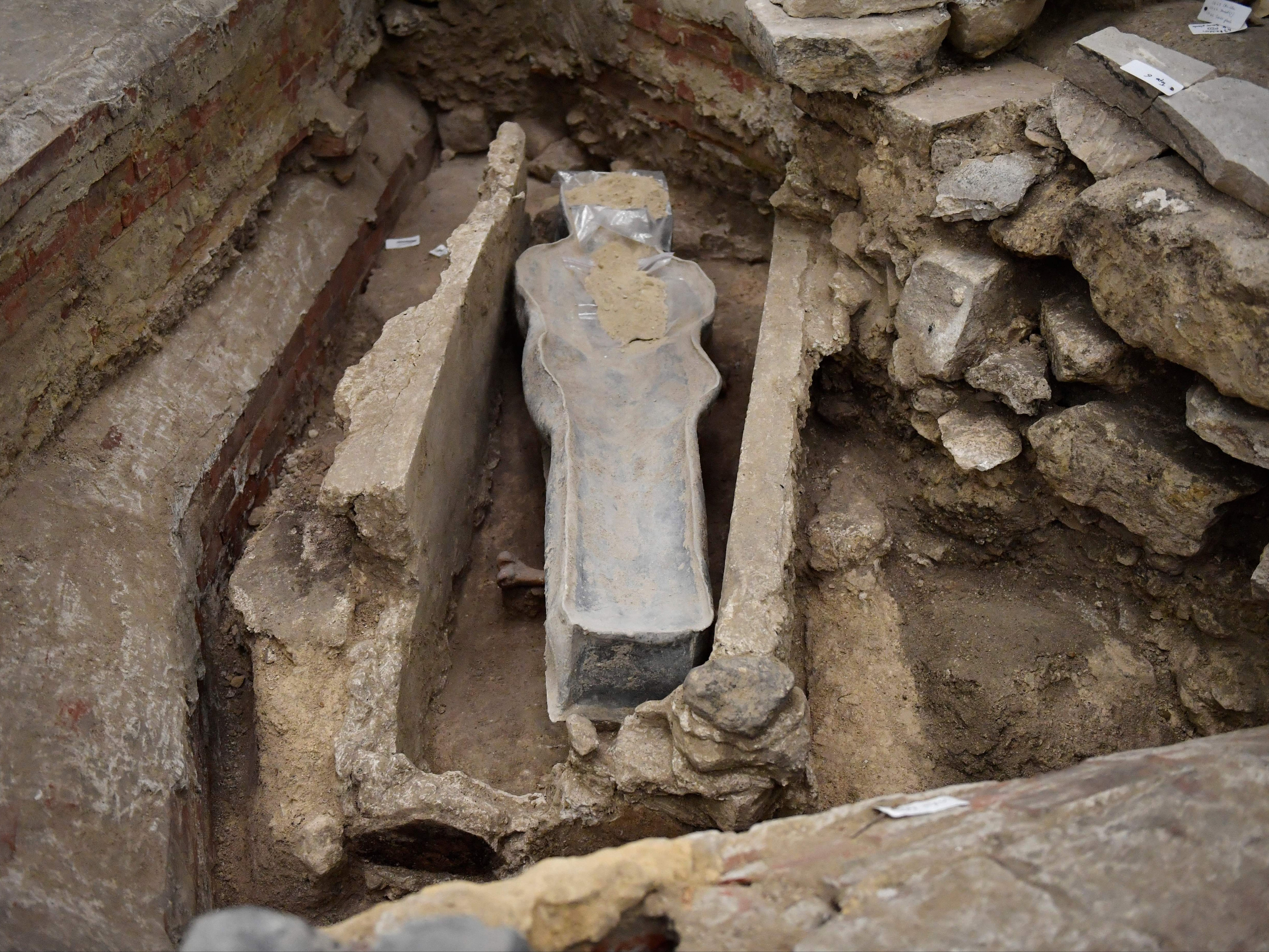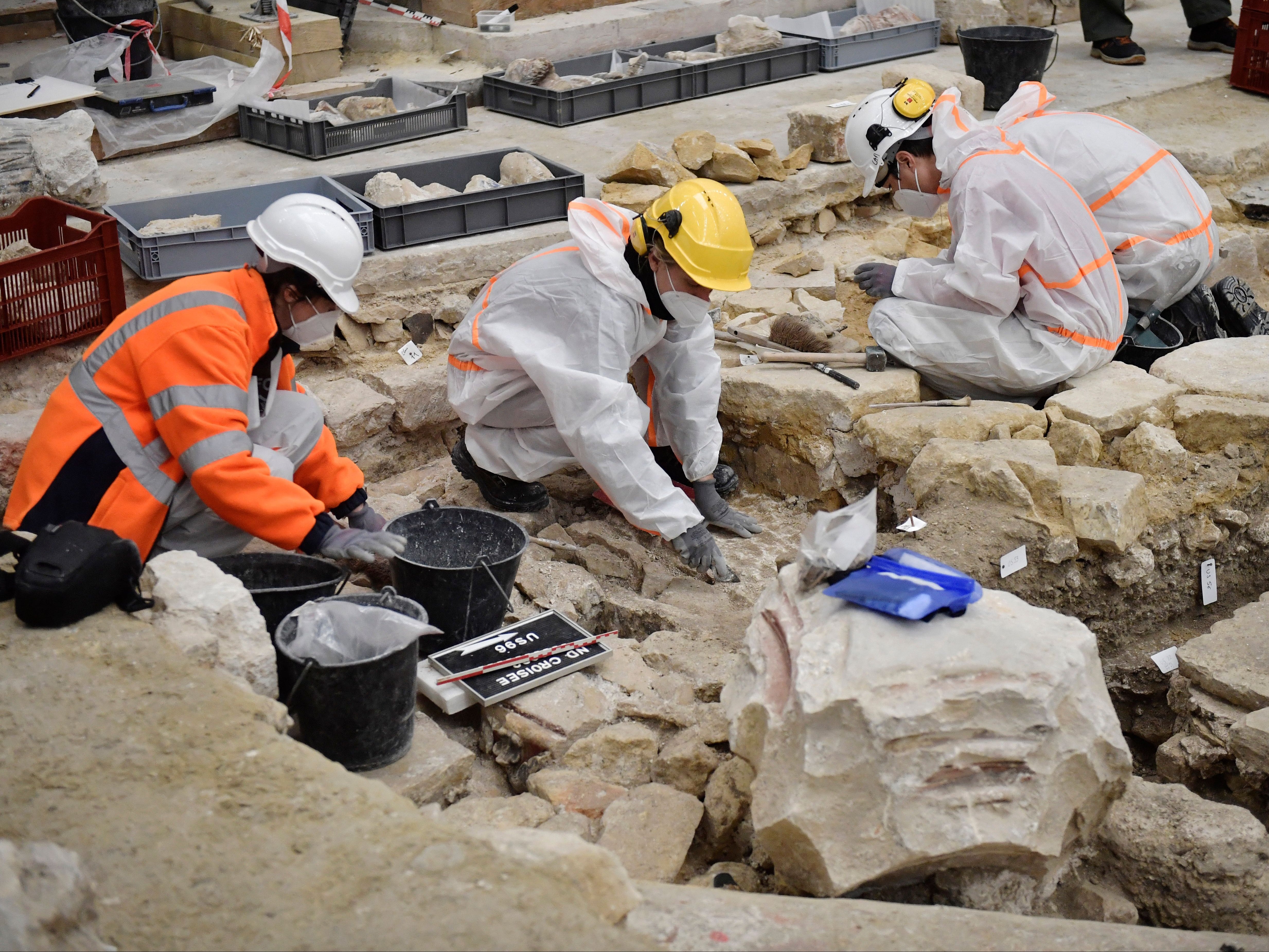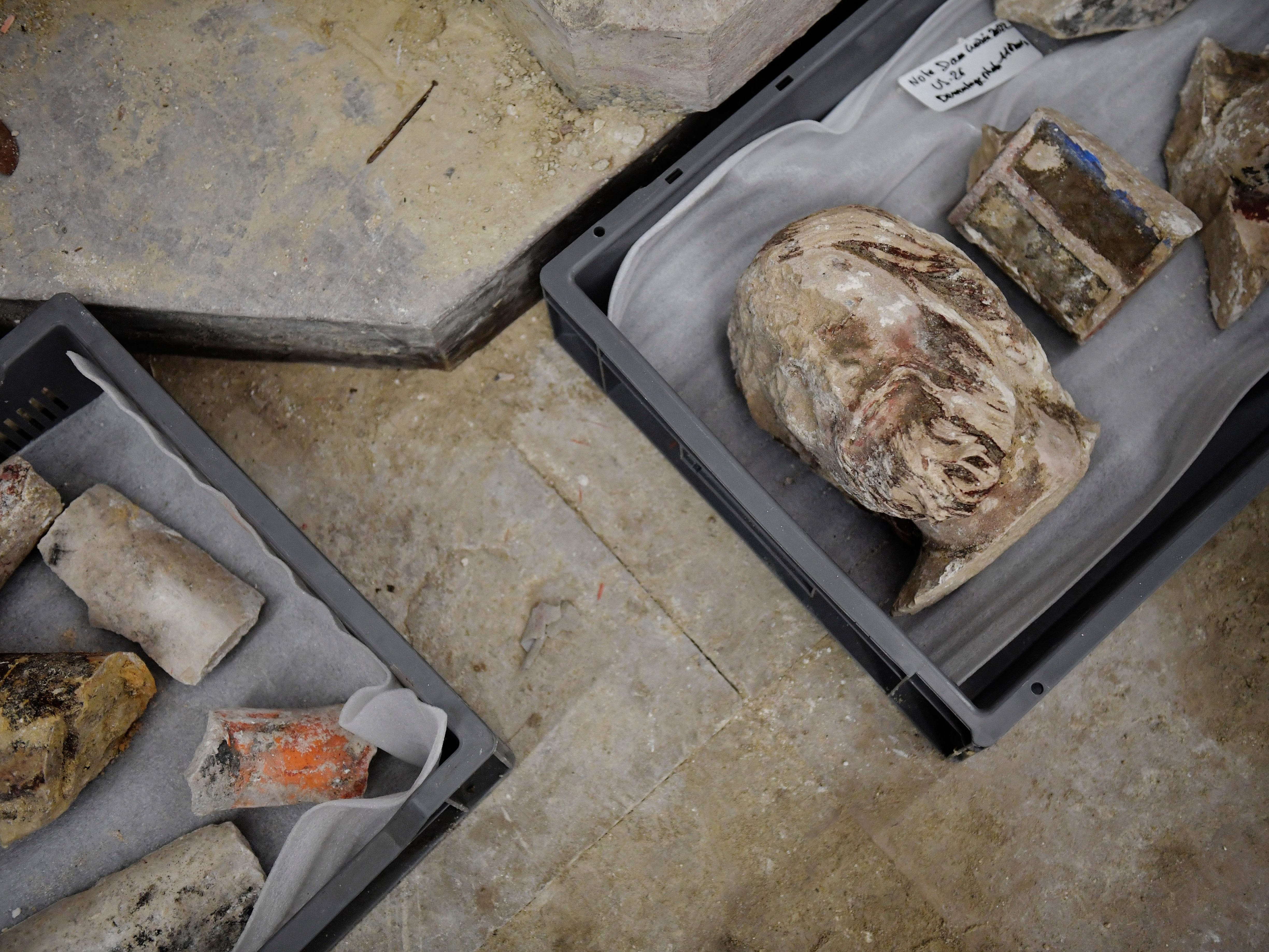Mysterious sarcophagus found in Notre Dame cathedral after 2019 fire set to be opened
Scientists hope to establish the identity of the person whose remains were found in the coffin, reports Lamiat Sabin

Scientists are to prise open a sarcophagus which was found during the rebuilding of the Notre Dame cathedral.
The “completely preserved” lead coffin was unearthed on 15 March during restoration work following the fire that devastated the iconic church in 2019, France’s ministry of culture has said.
Forensics experts have already established that the sarcophagus – 1.95 metres (6ft 4 in) long and 48cm (1ft 6in) wide – contains human remains.
Investigations with an endoscopic camera also established the upper part of a skeleton, a pillow of leaves, fabric, and possibly hair are concealed within.
Scientists are now set to open the case to establish the sex of the remains. They also hope learn about the deceased person’s health and social standing during life, lead archaeologist Christophe Besnier said.
It is believed that the coffin was made for a senior church official in the 1300s, a century after the cathedral was first built.
Mr Besnier said the discovery was made under a mound of earth that also contained furniture dating from the 14th century.
He said: “If it turns out that it is in fact a sarcophagus from the Middle Ages, we are dealing with an extremely rare burial practice.”

The sarcophagus was removed from the cathedral for analysis on Tuesday, France’s national archaeological research institute, INRAP, said during a press conference.
It is currently being held in a secure location and will be sent to the Institute of Forensic Medicine in Toulouse “very soon”.
A few weeks after the sarcophagus was found, archaeologists discovered statues, sculptures, tombs and pieces of an original rood screen – an ornate partition that separated the clergy and choir from the congregation – dating back to the 13th century.

Mr Besnier told The Guardian: “We uncovered all these riches just 10-15cm under the floor slabs.
“It was completely unexpected. There were exceptional pieces documenting the history of the monument.
“It was an emotional moment. Suddenly we had several hundred pieces from small fragments to large blocks, including sculpted hands, feet, faces, architectural decorations and plants. Some pieces were still coloured.”
The fire swept through the 850-year-old cathedral, one of Paris’ most famous and most-visited landmarks, on 15 April 2019.
The cathedral’s roof caught fire while the building was undergoing renovation and restoration. The blaze went on for about 15 hours.
The shocking damage sparked about 340,000 donors from 150 countries to give nearly £700m (€844m) for its restoration.
Damage of the lead-covered wooden roof resulted in lead contamination of the site and surrounding area.
French president Emmanuel Macron has vowed that the cathedral site will be formally returned to the church on 15 April 2024, and that the first mass since the fire will be held in the cathedral that day even if the reconstruction has not been finished.
It is also hoped that the rebuilding will be completed in time for the 2024 Paris Olympics, which are expected to start three months after the mass.







Join our commenting forum
Join thought-provoking conversations, follow other Independent readers and see their replies
Comments